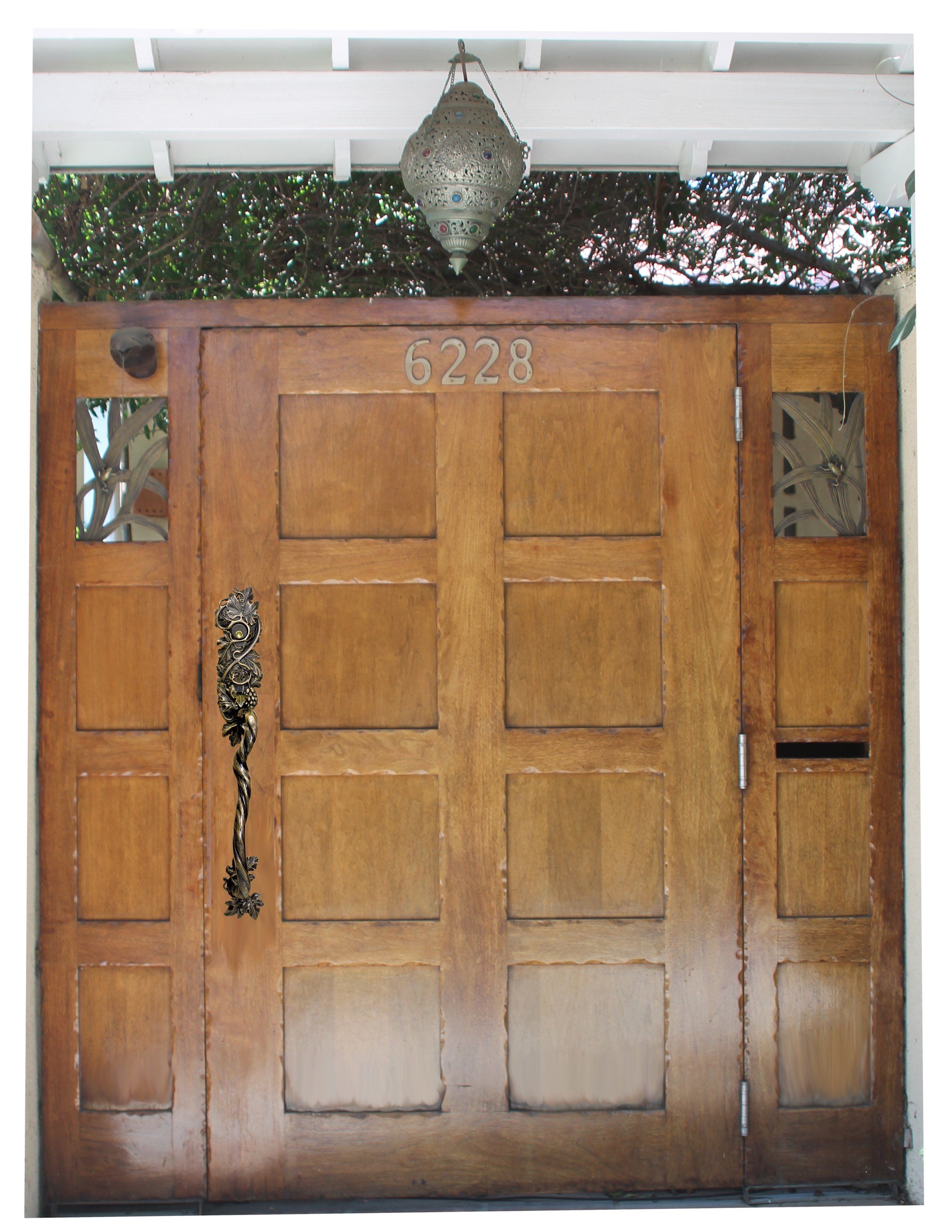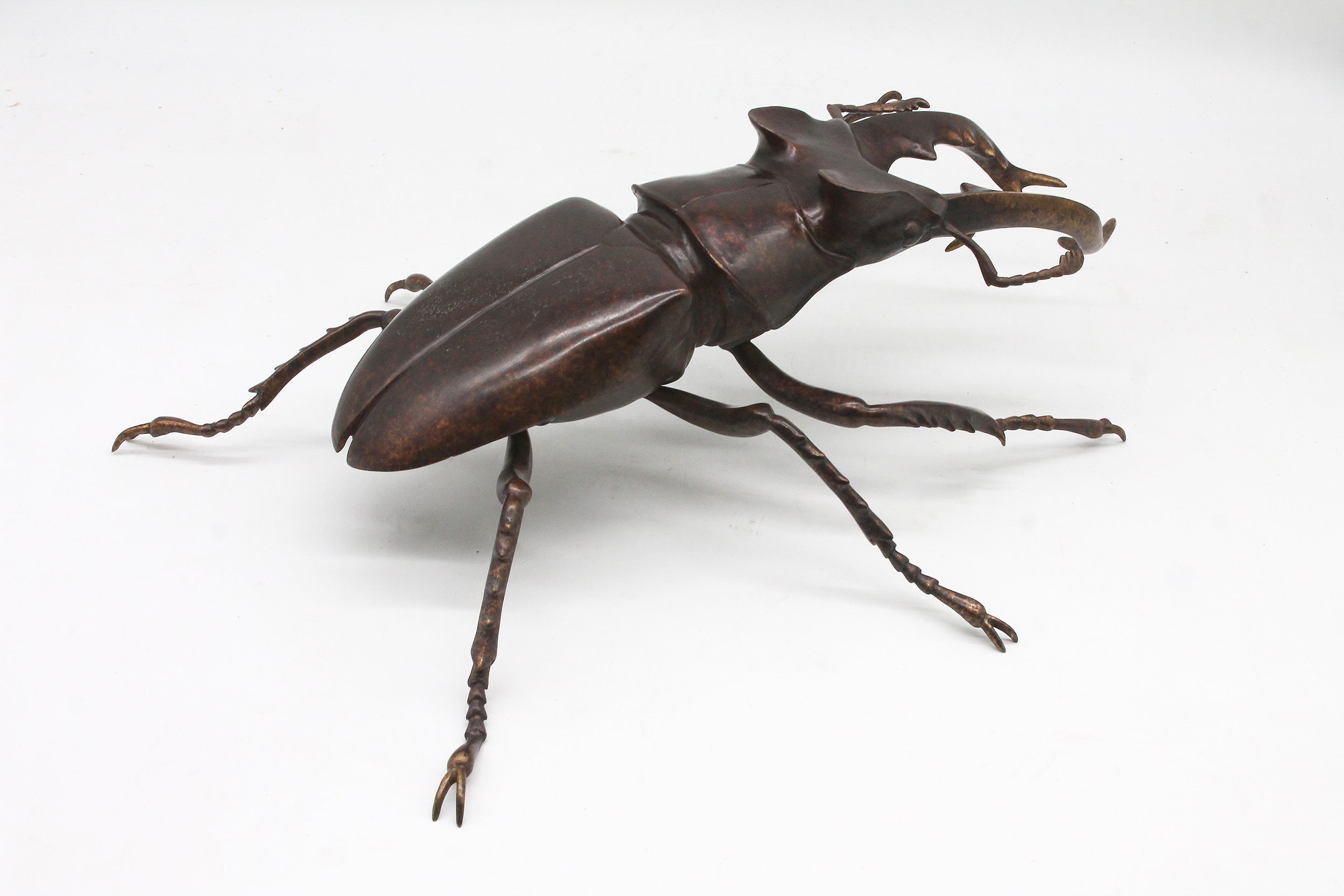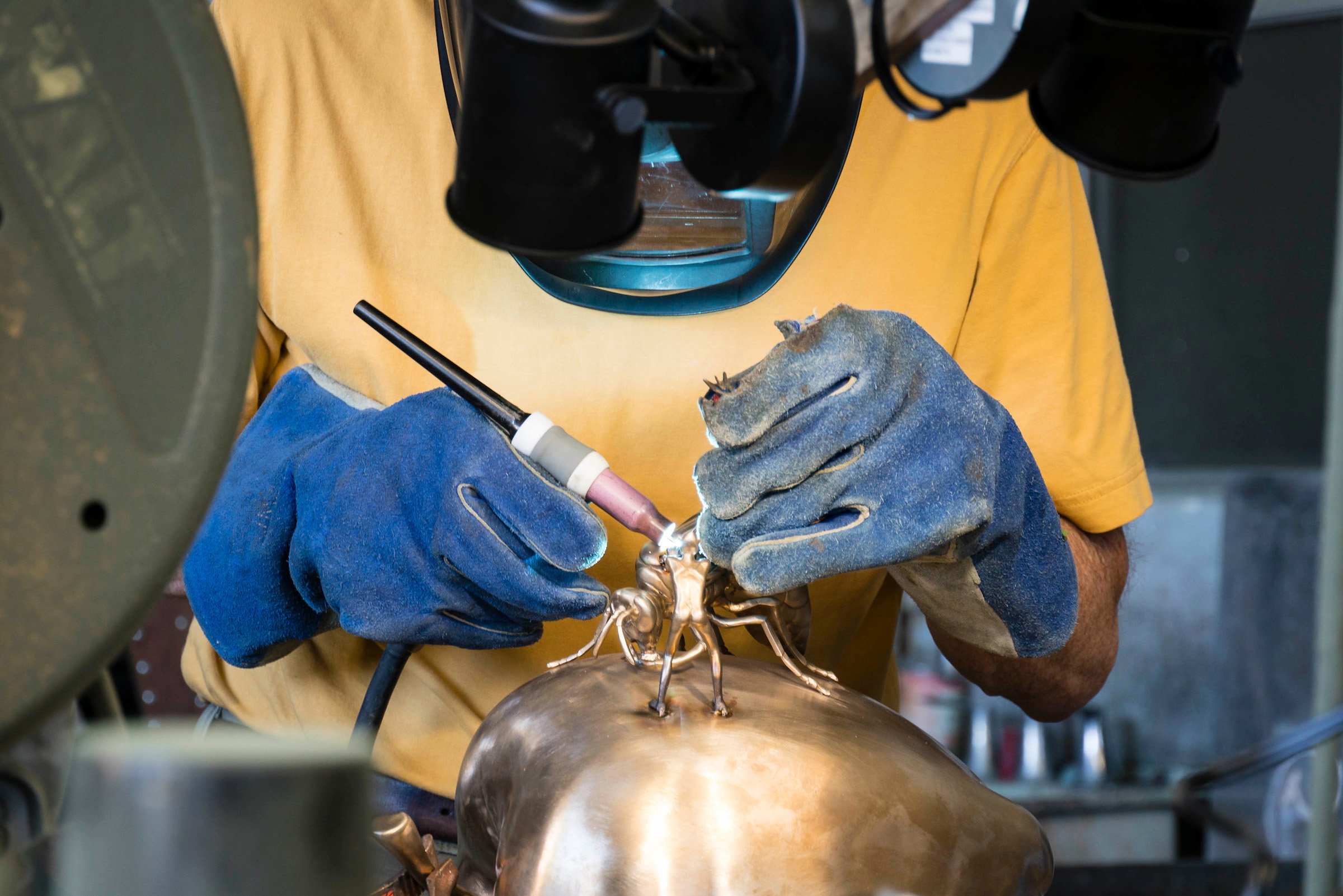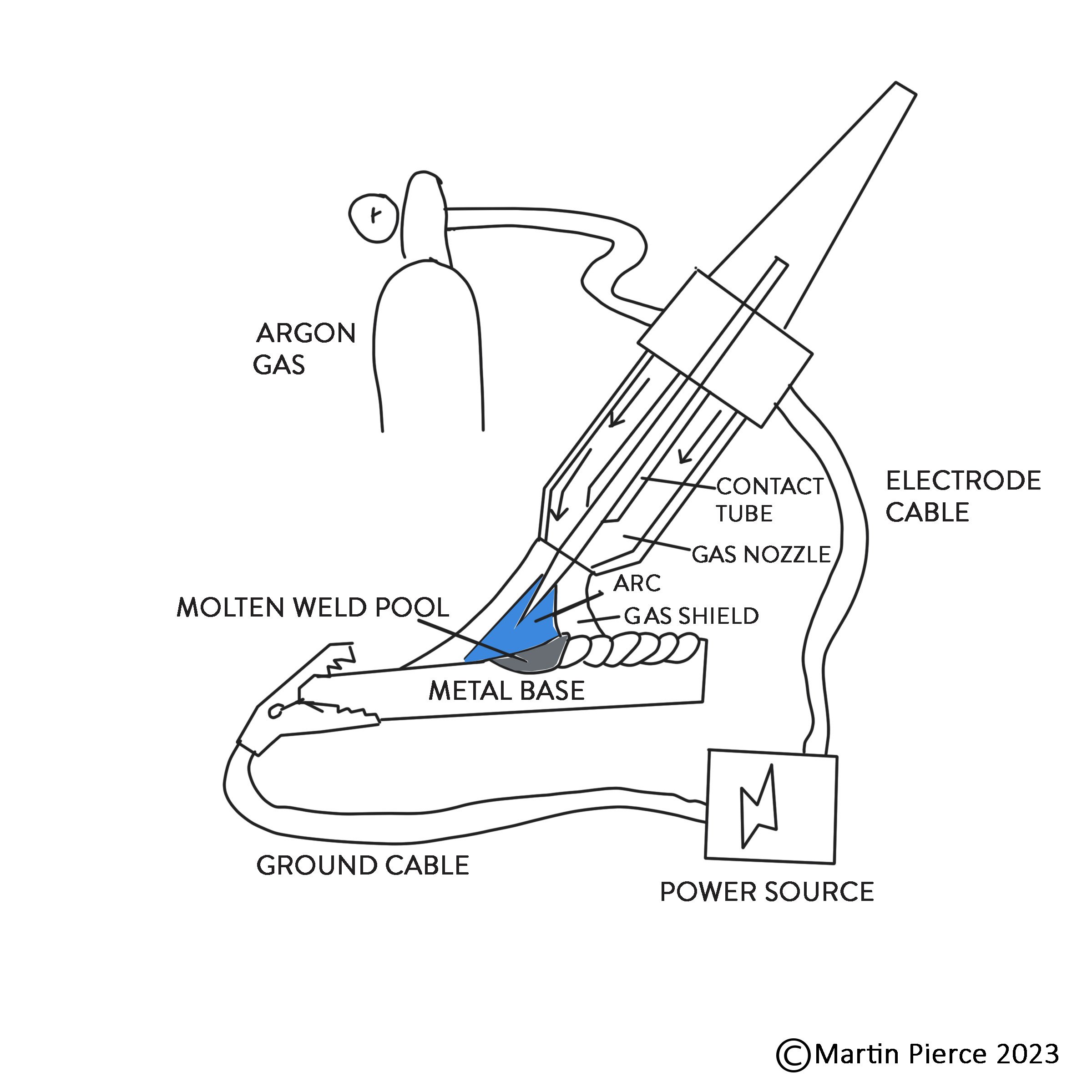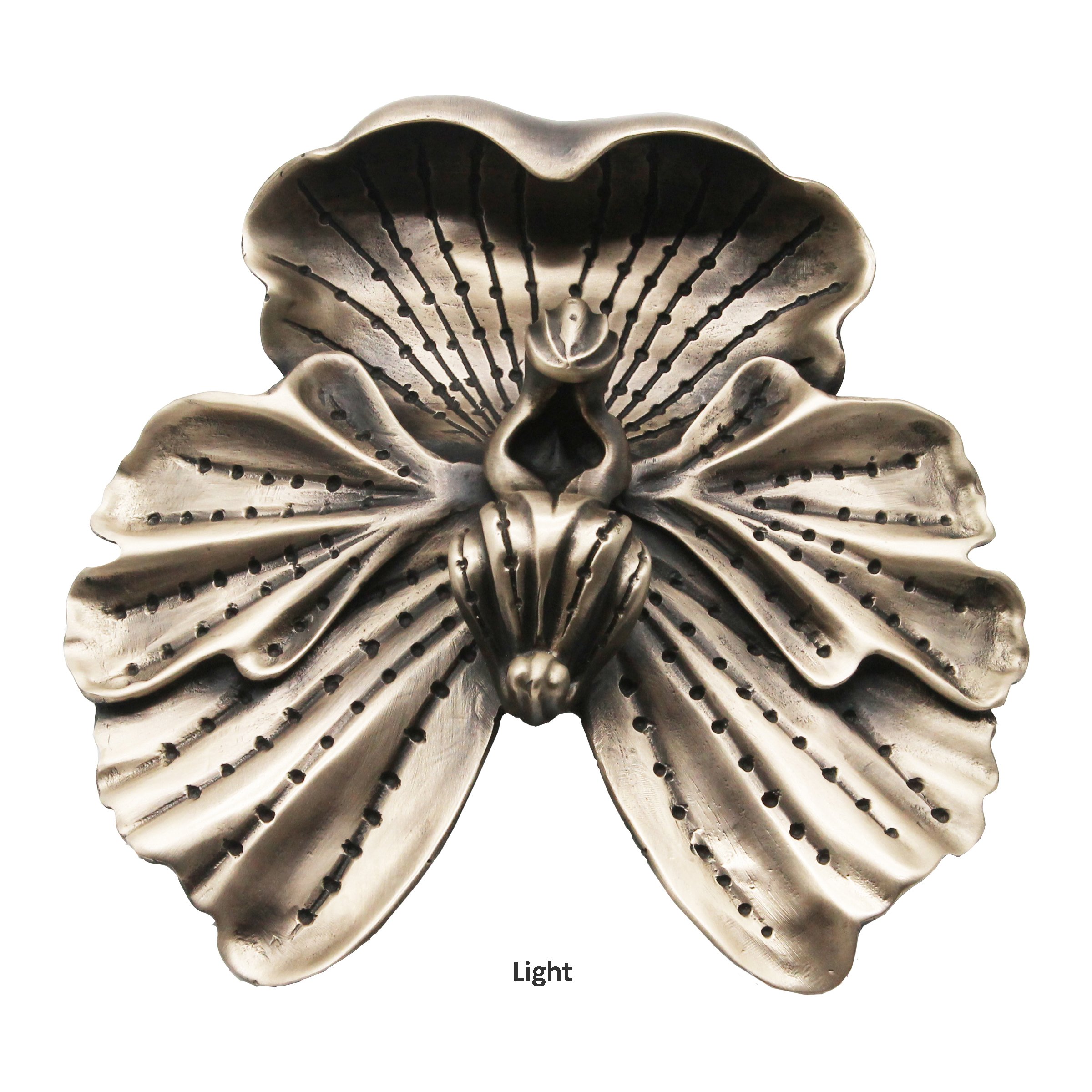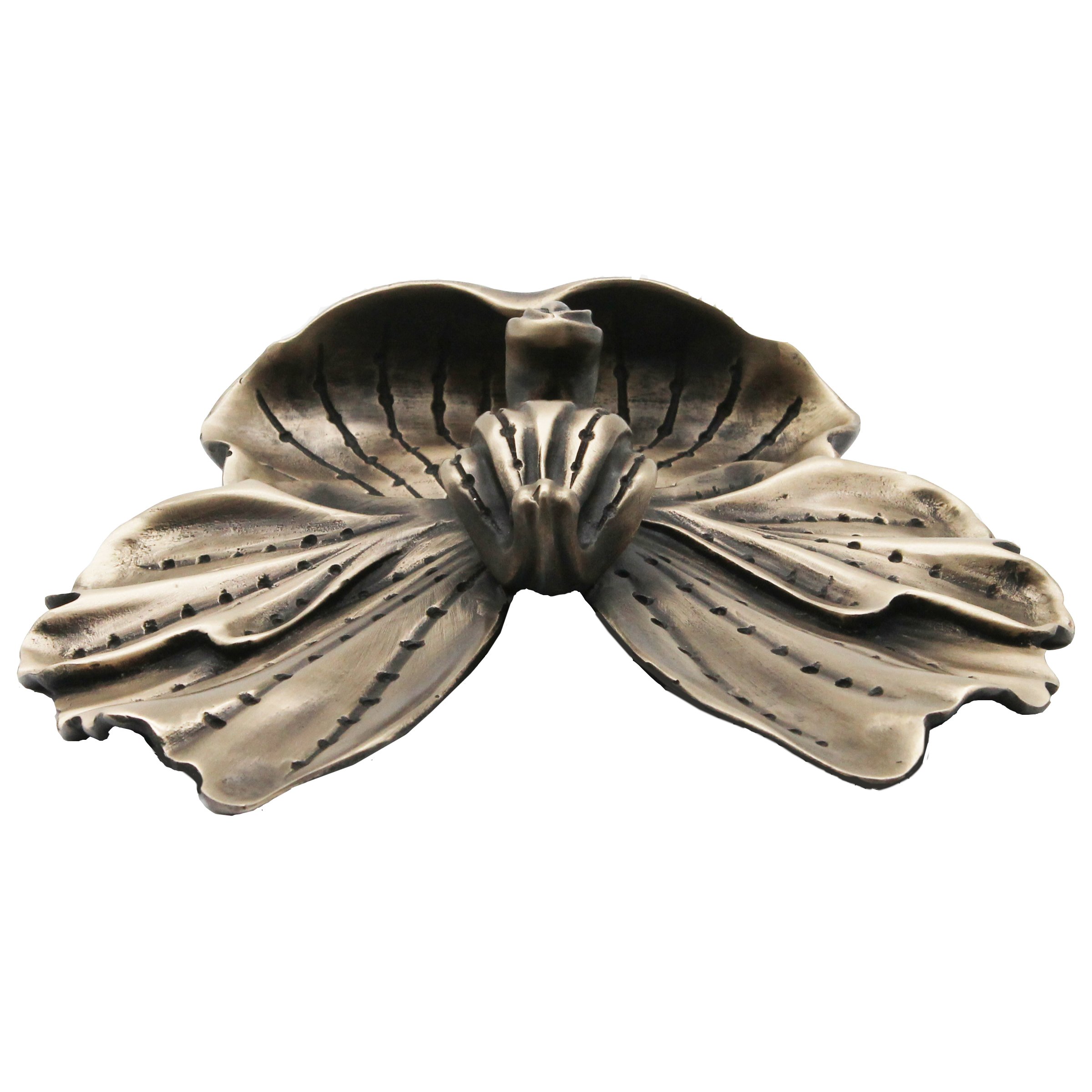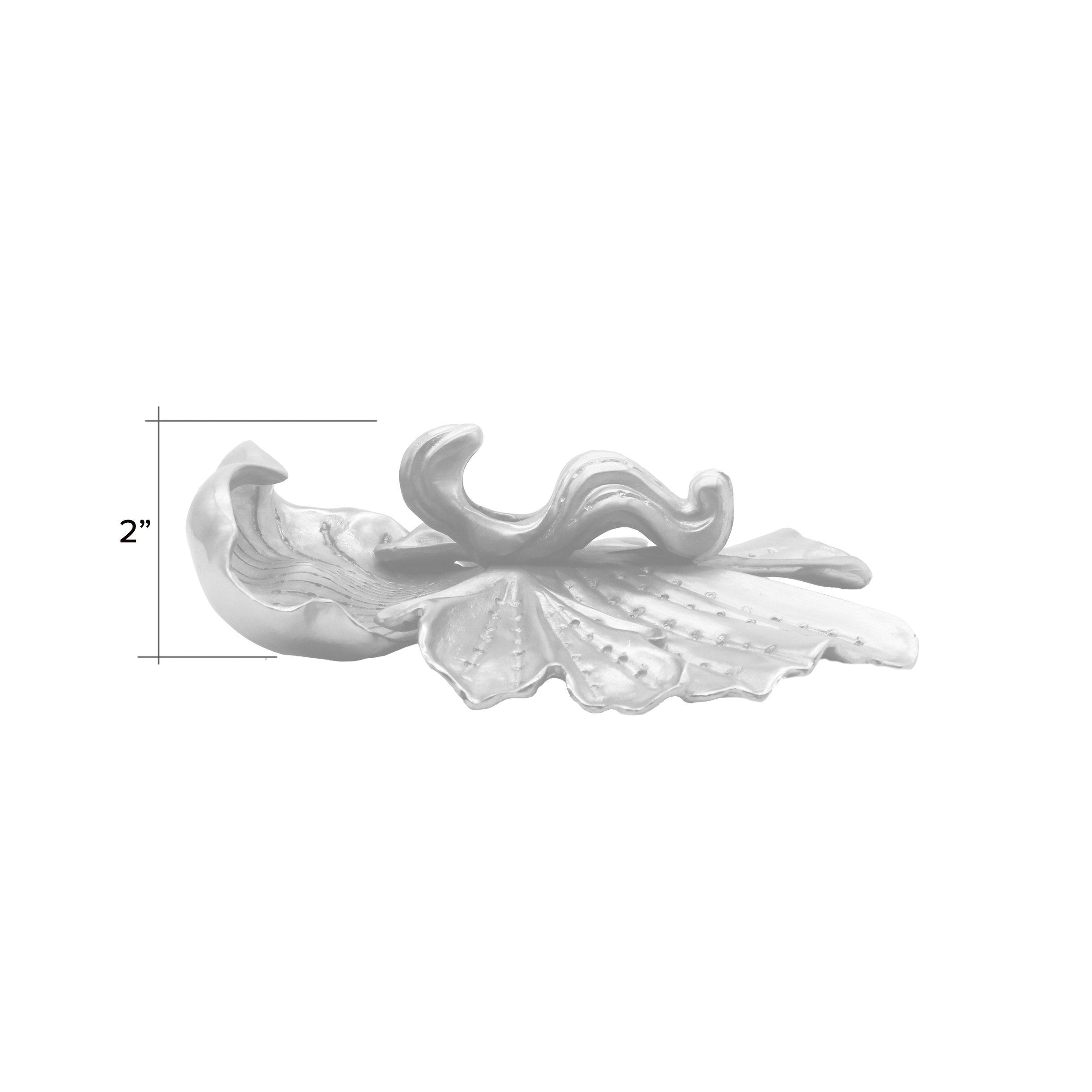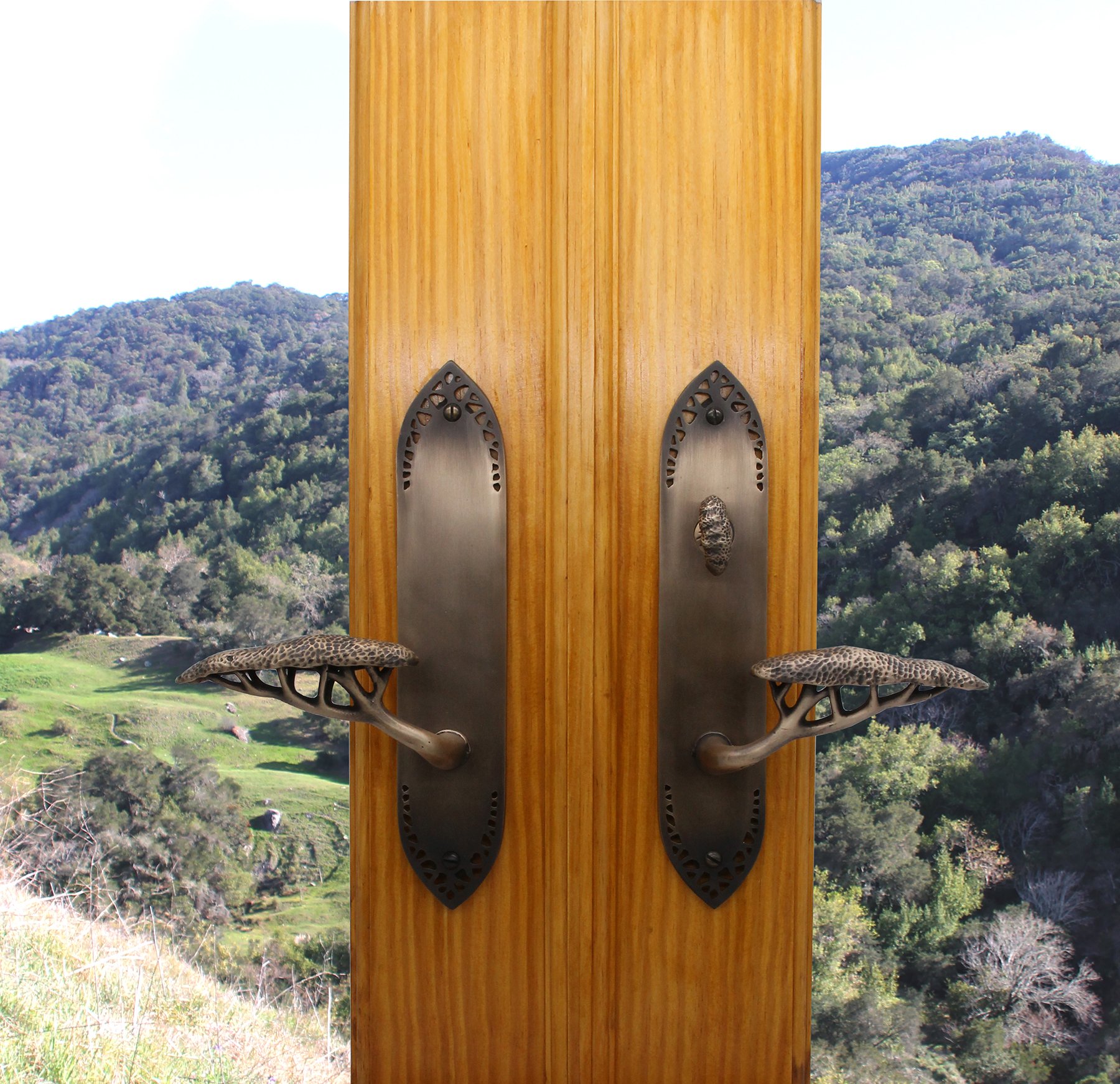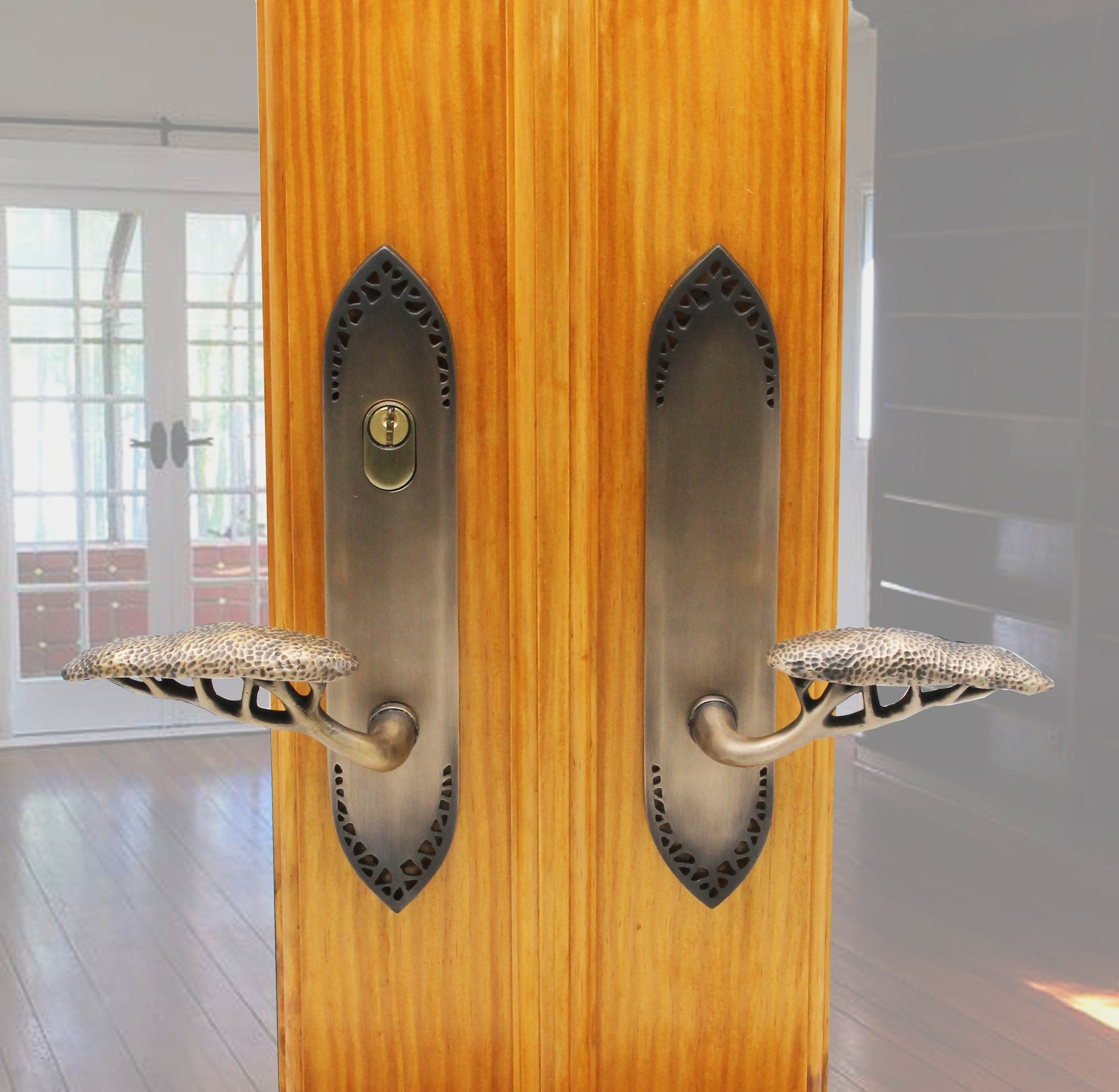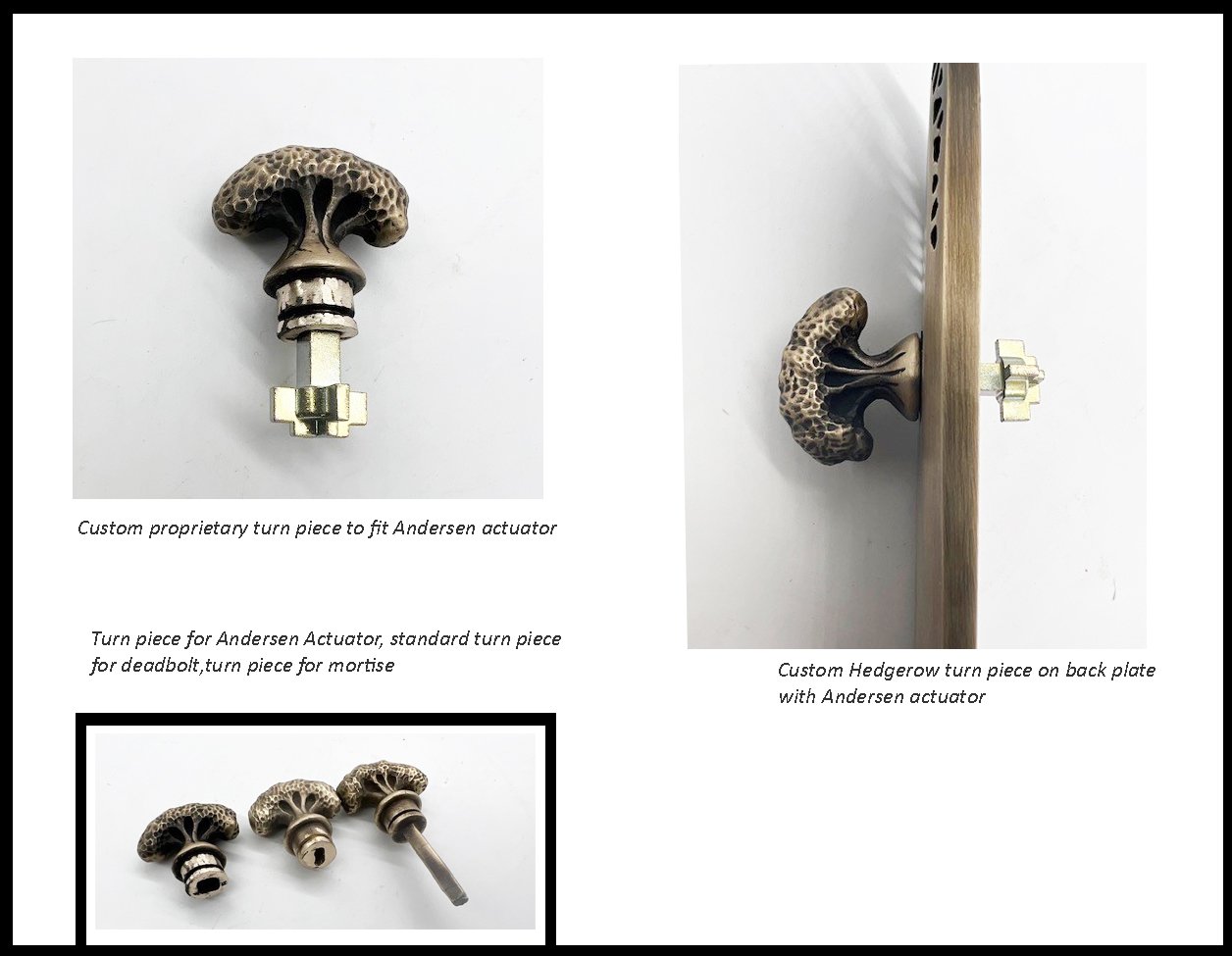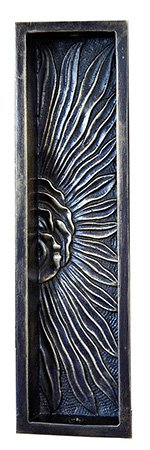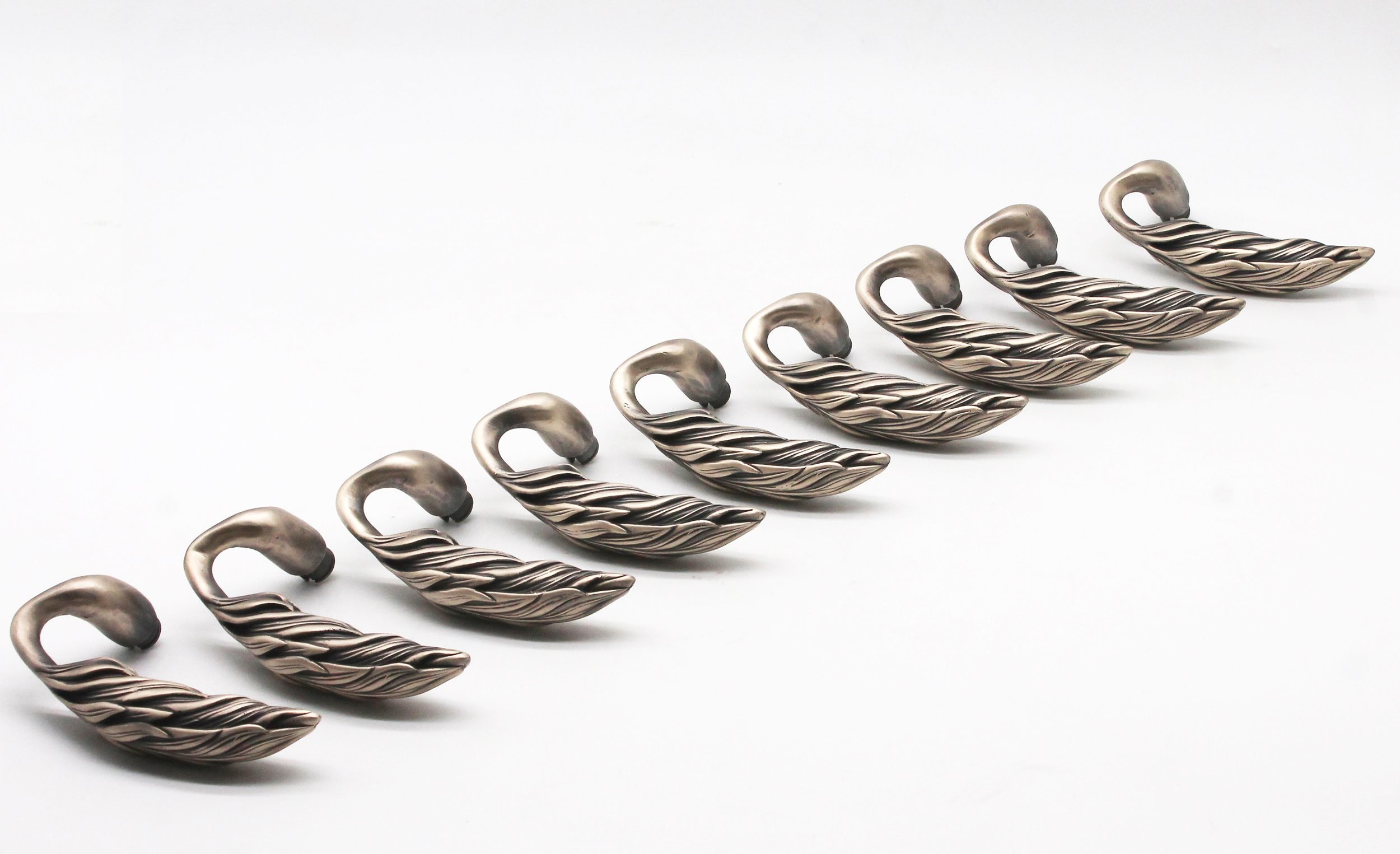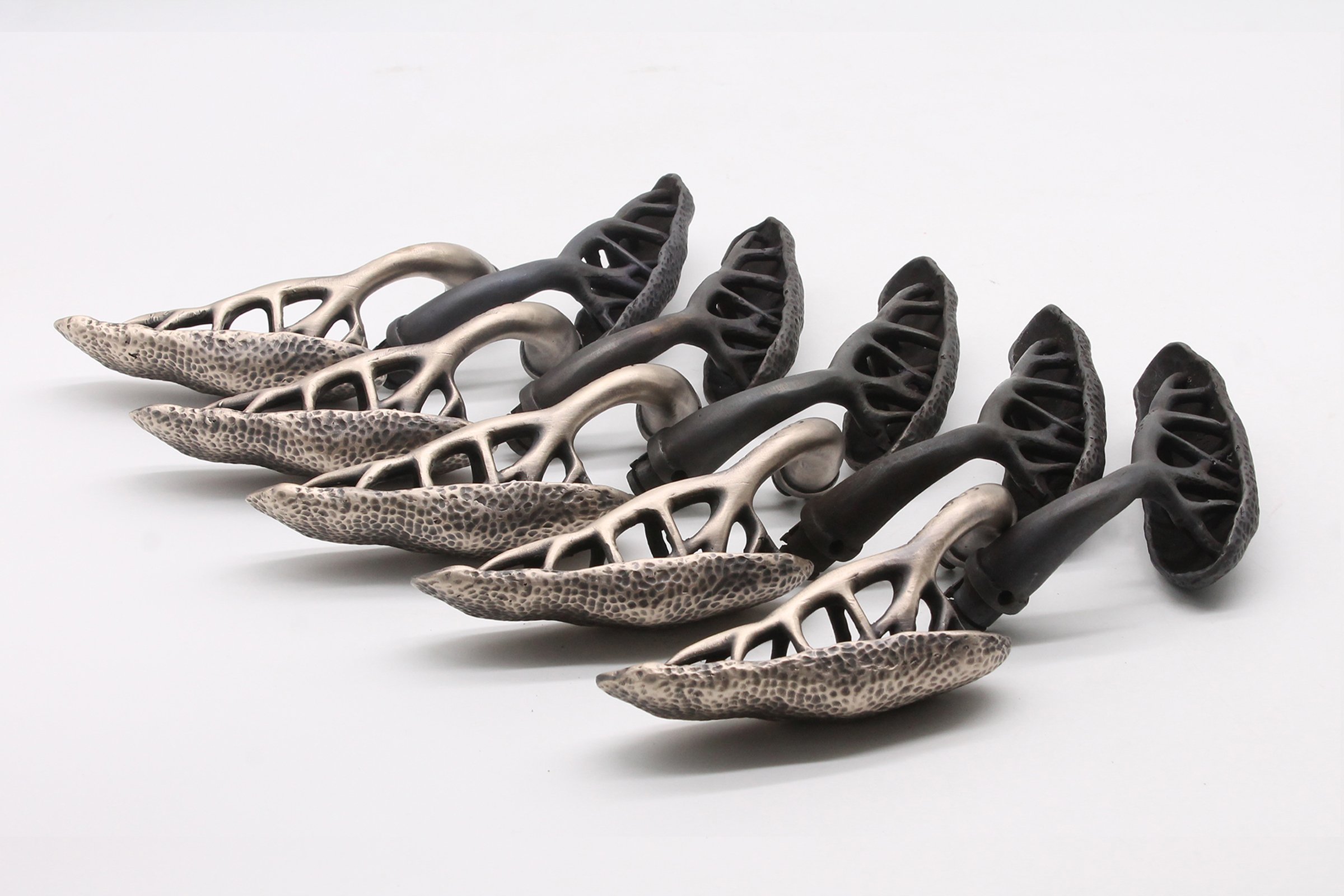Entry Gate statement
An entry gate does not have to be large to make a statement as the photo below shows. Equally, if the budget restricts, the locking mechanism can be simpler.
The gate featured here was custom made in solid walnut with walnut veneer recessed panels.
The top panels to the left and right of the gate measured 12” x 18” x ¼” and were cast in solid bronze and decorated with a small frog from our animal collection of cabinet pulls. While frogs were used on these panels, many pieces from our cabinet hardware collection would work equally well.
Gate Entry Hardware
The entry way handle set is from our collection of wine cellar door handles and the large vine grip was part of an entry thumb latch set. While a mortise thumb latch to lever lock was used here, a simpler tubular lock could be substituted.
This would need to be called out at the time the set is ordered as the tubular latch has only one port for the thumb latch and lever unlike a mortise with 2 ports that are spaced apart to create a more comfortable distance between the stem grip and thumb piece. To create a similar spacing for a tubular latch we would position the grip lower during machining. The thumb piece in this configuration would be off center and would be a custom design that is currently in development and will be available at no additional cost.
Off- center thumb piece being developed for tubular deadbolt configuration with lever on inside
Gate construction
Walnut with exposure to sun becomes lighter and golden and like bronze develops it’s own living patina. The solid sections were roughly chiseled to give a more hewn rustic appearance. The structure and design of the wooden gate are not daunting and in the hands of a good gate maker or wood worker would be easy to recreate and not unduly expensive. Choosing the best sealant to finish the wood and maintaining it on annual basis is critical as exposure to rain, humidity and sun will cause the wood to shrink, crack and deteriorate over time.

